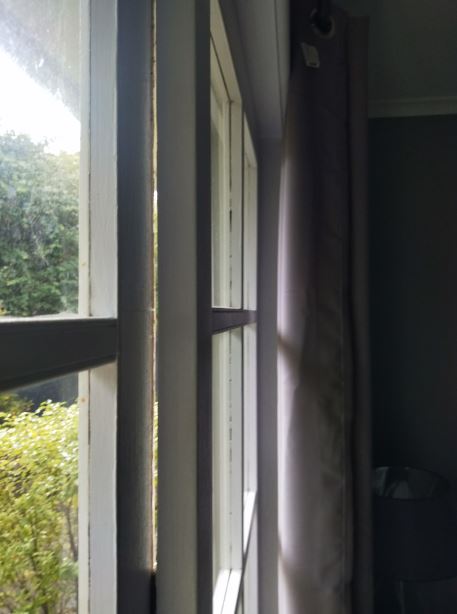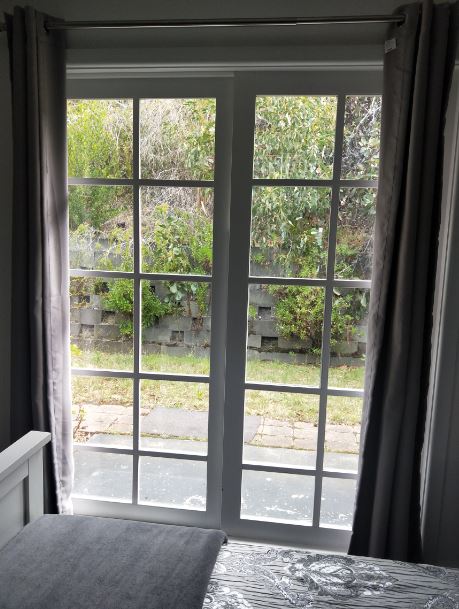My family recently went to Tasmania. The map we used for our planning showed very clearly that Antarctica was less than 60 cm away.
Now I know that the map we were using wasn’t to scale, but in real life, and especially from the perspective of a Queenslander, it’s really close to some seriously cold real estate.
I can’t really complain because the weather was almost perfect every day when we were there and we could organise the trips we had planned around the occasional sprinkle of rain.
My clever wife booked us mostly into Airbnb accommodation which was of a very high standard indeed including both high set and low set homes.
Not only was our accommodation located in some very interesting places, the design of each home varied considerably with various pros and cons.
We plan to visit Tasmania again at some time into the future and will again use the Airbnb concept. Because of what I do, each dwelling that we had the opportunity to stay in, and many others along the way, were scrutinised in some detail as to their energy efficiency. There was room for improvement in every location and mostly, some very simple modifications could have made some significant differences.
Having said that, as a general rule, the properties that we stayed at were built to suit the conditions of the climate zones in which they were situated. Some of the places where we stayed had single pane glass windows but I’m not a hard marker, especially for older residences. Each one had reverse cycle air conditioners located strategically throughout the construction and these came in very handy as our two week visit was towards the end of Autumn.
As one would imagine, the older homes were a little less energy efficient, especially those built before 2003 when being compliant with set energy-efficient standards became mandated.
What I wanted to do here was to draw your attention to a serious oversight resulting in a thermally poor performance by one of the places where we stayed. I would even liken this oversight to driving a car around with the handbrake on. That analogy is very easily seen to be not very energy efficient. And neither was the building I am about to describe.
The accommodation was surprisingly quite new and was located right on the beach on the southwestern side of the Island. The three bedroom unit was recently completed but I say surprisingly quite new because all windows were single pane glass with quite a large glass area in the building.
Because glazing is thermally the weakest, or should be the weakest, part of the home, the additional outlay for more energy efficient windows in the new construction would have well paid for themselves on energy savings within a very short amount of time.
That may not be true in an environment that has minimal variations in ambient temperatures throughout the year, but on the southwestern coast of Tasmania, the payback time for more thermally efficient windows would have been very short.
 The first photo, let’s call that exhibit one, (your Honour) shows a sliding door that was located in the master bedroom.
The first photo, let’s call that exhibit one, (your Honour) shows a sliding door that was located in the master bedroom.
When outside temperatures, either day or night, drop to freezing or below, simply closing the curtains would reduce quite a lot of heat loss through the glazing.
Where this construction lost points was that a number of windows “leaked” significantly.
That is, they didn’t seal well and therefore allowed cold air in and warm air out. The sliding door pictured was possibly the worst culprit in the unit.
Even from a distance you can see light penetrating the gap. A closer view reveals the extent of the leak and may score a cameo role if anyone made a horror movie called “Thermal Suicide”.
Because the air temperature inside the building was significantly higher than that of the outside ambient temperature there exists air pressure differences that nature wants to naturally correct.
The warmer air inside the room will naturally do two things. It will rise to the ceiling and vent where it can. It will also allow the cold, more dense, air to occupy the lower levels towards the floor where humans walk, sit and sleep. This is so very easily done when you have such a big gap allowing air to pass freely in and out. The temperature exchange would become more significant during windy conditions that increase the air pressure of the colder outside air even more.
All of the Airbnb homes that we stayed at scored well in every facet of presentation.
There is usually room for improvement in the thermal performance of most homes, including, I will admit, my own family home. Having admitted that,
I could not think of any reason why the owners of this establishment would not
have both known how thermally poorly at least these two sliding doors would
perform, or, why they haven’t done anything about it? >>>LEARN MORE>>
I couldn’t see any upside in leaving the doors and windows in the same state, but the downside is that there will be significant heat losses in these areas, including an increasing draught in the bedroom as the mercury plummets and an increased electricity bill as the heater on the reverse cycle air conditioner tries to keep up.
John Lynn
suburbanoffgridliving.com

